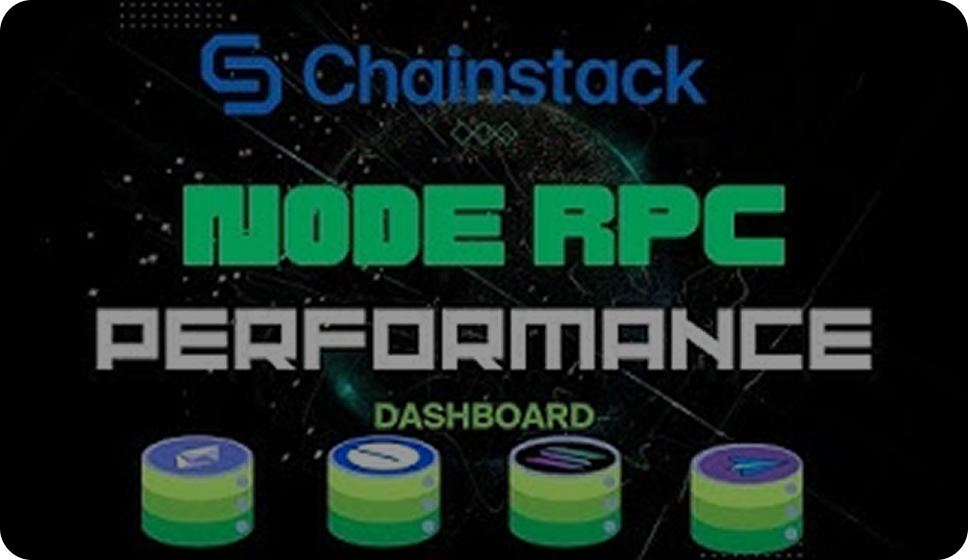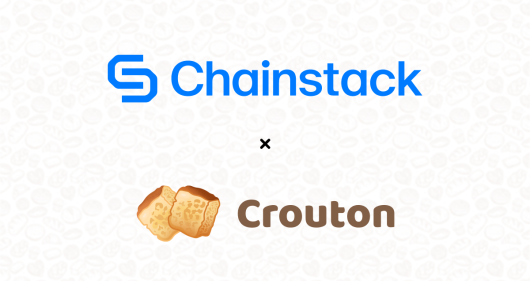Beyond monolithic: Modular blockchain architecture and the Scalability Trilemma

The advent of blockchain technology significantly changed various industries, offering transparency in a decentralized system. Blockchain’s profound impact can especially be seen in innovative transaction processes that brought unprecedented tracking capabilities to supply chains and simplified the process of international payments.
In public blockchains, validators, who are motivated by self-interest, play a crucial role in transaction recording. However, the sustainability of these incentives can often lead to network congestion and high fees.
This has shifted the preference towards alternative blockchain models, which might favor higher transactions per second (TPS) over security and decentralization. This diversity in blockchain designs also contributes to the inherent fragmentation within the sector.
High chain performance, scalability, and adaptability largely depend on its architecture and design. To overcome these challenges and improve scalability, Web3 developers are turning to modularity—a strategy that segments a blockchain into smaller, autonomous parts, thereby increasing flexibility and efficiency.
Embracing modularity in blockchain architecture design
Rather than having a blockchain technology that encompasses all its functional dimensions within a single system (a monolithic blockchain), modularity aims to break down the blockchains into smaller, self-contained parts. The idea is to increase flexibility and efficiency, promote innovation, and reduce transaction times, in order to improve the overall user experience.
By breaking the blockchain down into autonomous parts, developers can fine-tune the individual sections to better handle specific tasks within the network. This customized approach to design allows for seamless integration and optimized network performance.
However, maintaining high-level security in a decentralized network while also supporting a large volume of transactions is a complex challenge for blockchain technology. This challenge is known as the Scalability Trilemma and serves as the foundational model for blockchain architecture design.
Unraveling the Scalability Trilemma
The Scalability Trilemma or the Blockchain Trilemma as it is also known as, refers to the complex and delicate balance that public blockchains face when striving to attain three critical aspects:
- Security: Providing reliable consensus and unchangeability.
- Decentralization: Ensuring broad-based control of the network.
- Scalability: The capability of handling many transactions simultaneously.
To fulfill these objectives at once becomes challenging, often resulting in the need for significant trade-offs among these key attributes. In turn, these trade-offs form the essence of the trilemma.

Blockchains that focus on decentralization and security exhibit strong resilience against manipulation due to robust consensus mechanisms. However, they often encounter hardships with scalability.
In contrast, blockchains created with scalability and security as priorities often compromise some degree of decentralization. Consequently, those which opt for decentralization and scalability tend to suffer from security issues.
This trilemma poses a significant challenge for the development and adoption of blockchain technology. However, with modularity in performance and design, the industry is starting to see a way of addressing this trilemma more effectively.
The core layers of blockchain architecture
Blockchain architecture consists of four fundamental layers that facilitate its effective functioning:
- Execution: This layer is responsible for the actual processing of transactions within the chain. It involves nodes carrying out transactions, moving the blockchain from one state to the next. The execution layer is vital for user engagement within the protocol, enabling them to submit transactions, interact with smart contracts, and transfer assets.
- Settlement: Settlement acts as the stabilizing force of the blockchain, ensuring the permanency of transactions. It confirms the irreversibility of transactions, preventing any alteration, by verifying and settling discrepancies.
- Consensus: The consensus layer is fundamental for decision-making within the blockchain. This is where the nodes agree on the validity and order of transactions, maintaining a unified and consistent state across the blockchain network.
- Data Availability: This layer focuses on ensuring that data is consistently available within the network. It involves the distribution of transaction data by block creators, confirming that other participants in the network can easily access and store this data for the integrity and efficiency of the network.
These layers, collectively, support the efficiency and security of the blockchain, whether it has a monolithic or modular design. Understanding these layers makes it clear how different operational facets of a blockchain are interlinked in ensuring successful interactions with the protocol.

Understanding monolithic and modular blockchain architecture
Blockchain architecture impacts its performance, scalability, and adaptability significantly. To amplify efficiency and determine the most suitable option for a project, it is important to understand the differences, strengths, and weaknesses between monolithic and modular designs.
Monolithic blockchain designs
In monolithic blockchain architectures, all functions are consolidated into a single layer or a network of interlinked chains functioning at one level. Every node within these chains handles multiple responsibilities, including achieving consensus, ensuring data availability, and overseeing transaction verifications.
Solana and Ethereum prior sharding serve as classic examples of monolithic architectures with their integrated design, requiring each node to process blocks individually while maintaining a copy of their own ledger. While this reinforces security and decentralization, it also constrains the protocols’ ability to process large volumes of transactions or scale effectively as adoption grows.
Modular blockchain architecture
In contrast, modular blockchains consist of distinct units, each specializing in a specific operation. This division simplifies the process of development, testing, and maintenance while simultaneously improving scalability and flexibility.
Modular blockchain architectures function as a set of specialized units, with each module fine-tuned to perform its own specific function efficiently. This encourages a cohesive ecosystem of interoperable chains where developers have the freedom to integrate different modules to meet specific project requirements.
Rollups, whether they are optimistic like Arbitrum and Optimism, or zero-knowledge (ZK) such as Scroll and zkSync Era, which aim to improve the scalability of monolithic systems, stand out as an example in the arena of modular blockchains.
Monolithic vs modular blockchain architecture
Making an informed choice between monolithic and modular blockchain architectures requires considering their distinct attributes and implications. These two architectures vary considerably in aspects such as scalability, flexibility, complexity, and security.
Here’s a comparison of the two:
| Criteria | Monolithic | Modular |
|---|---|---|
| Scalability | Struggles with scalability, often at the cost of either decentralization or security due to inherent limitations. | Specifically engineered to enhance scalability by fine-tuning individual modules for better performance. |
| Flexibility | Characterized by a less flexible, unified structure that limits customization and adaptability. | Offers a high degree of adaptability through its composition of specialized chains, each designed for specific tasks. |
| Complexity | Features a straightforward, single-layer structure, which is easier to grasp but less flexible. | Inherently more intricate, integrating multiple components that require advanced security protocols for safe operation. |
| Security | Offers robust security via comprehensive node validations, supported by data redundancy across the network. | Security is contingent on the reliability of each module, posing a risk of systemic issues if any component fails. |
| Composability | Facilitates a cohesive DApp ecosystem within a single network, streamlining interactions and functionality. | Could face challenges in DApp integration due to the involvement of disparate systems, potentially leading to operational inefficiencies. |
| State Management | Often grapples with state bloat resulting from transaction accumulation, affecting hardware demands and network decentralization. | Utilizes approaches like data sharding to efficiently manage data growth, thus alleviating state bloat concerns. |
| Cross-chain Security | The equilibrium between security, decentralization, and scalability is tough to maintain, complicating the shared security paradigm in a multi-chain setup. | Can boost security by tapping into the security models of parent chains, a significant advantage for Layer 2 solutions. |
| Execution | Confined to a uniform operational environment, albeit with the advantage of network-wide access to resources via smart contracts. | Provides more operational sovereignty, permitting specific adjustments to the technological stack as needed. |
| Developer Experience | Tends to be more developer-friendly due to established methods and accumulated experience in its usage. | Represents a newer, more experimental domain, necessitating a deeper learning curve and expertise in novel technologies. |
| Upgradability | System upgrades can be challenging, often requiring a comprehensive overhaul and risking extended downtime. | Promotes smoother, incremental enhancements, reducing the likelihood of complete system failures and minimizing operational interruptions. |
This comparison underscores the trade-offs when choosing between monolithic and modular blockchain architectures. Each has its own benefits and challenges, catering to the diverse needs of Web3 developers, their projects, and users within the landscape.
Degrees of modularity in blockchain architecture design
Blockchain architecture is in a state of constant flux, giving rise to a diverse range of designs. From fully integrated monolithic systems to highly fragmented modular setups, blockchain architectures can be categorized into four primary types, each representing a different approach to modularity:
- Monolithic: Notable examples in this category include Bitcoin, Ethereum prior sharding, and Solana. These chains handle all core blockchain functions internally without dependence on external blockchain networks.
- Polylithic: Chains like Avalanche (Subnets), Polygon (CDK), Starknet (Appchains), and zkSync Era (Hyperchains), exemplify the polylithic model. This structure is characterized by a foundational layer that interconnects a series of chains with varying degrees of similarity. They distribute network functions across several subnetworks, all reliant on the main network.
- Semi-modular: In this category, you will find chains like Ethereum (post data sharding updates) and Tezos. These networks combine internal operations with external systems for specific functionalities. While they manage some processes internally, they delegate other functionalities to external, specialized networks. Despite this, semi-modular blockchains maintain the capability to process and validate transactions within their own ecosystem.
- Modular: This category includes networks like Aptos and execution-specific protocols such as Arbitrum, Optimism, and Scroll. Such protocols specialize in particular functions and are not equipped to manage all operational aspects on their own.
The degree of modularity a blockchain design adopts depends on the specific needs of a project and the tradeoff it is willing to make between decentralization, security, and scalability—the three components of the Blockchain Trilemma.

Figure 4: Spectrum toward blockchain modular design; Source: VISA
Modular blockchains in the future to come
Since Bitcoin’s launch in 2009, blockchain technology has seen significant transformations, particularly in its design and structural aspects. The initial focus on decentralization and security has expanded to include scalability and adaptability for real-world applications.
Consequently, blockchain designs now exhibit varying degrees of modularity, each tailored to cater to the specific needs and challenges of different applications and use cases. Modular designs, while offering flexibility, scalability, and specialization, do add an extra layer of complexity, which requires cross-chain coordination, as well, in order to function properly.
However, as blockchain technology and its applications continue to develop, the modularity spectrum is likely to expand, giving rise to novel and inventive design approaches. But alongside the burgeoning modular ecosystem, there is also a resurgence in new monolithic designs focused on scalability, such as the Oasis Sapphire protocol.
These emerging trends in blockchain architecture indicate that the ongoing diversity in design and innovation will continue to enrich the Web3 landscape in the years to come.
Bringing it all together
As blockchain technology continues to evolve, the shift from monolithic to modular designs is becoming increasingly evident. This transition speaks to the technology’s ability to adapt its architecture and functionality to meet the demands of increasing complexity, scalability, and diversity in its applications.
While monolithic designs emphasize a comprehensive, all-in-one approach that favors security and decentralization, the evolving industry necessitates more adaptable solutions. Modular blockchains are meeting this demand by developing specialized, interoperable layers that offer a balance of security, scalability, and decentralization, addressing the blockchain trilemma more effectively.
However, it’s crucial to understand that each type of architecture has its strengths and weaknesses, and the choice between monolithic and modular should be navigated carefully. A decision should be driven by the specific needs of a project or its use case, considering factors such as adaptability, scalability, security, and the target audience’s technical proficiency.
Regardless of the type of architecture chosen, it’s evident that as blockchain technology matures, so does its versatility and potential. Whether through the robust, proven security of monolithic designs or the flexibility and scalability of modular architectures, blockchain technology continues to redefine the realms of digital transactions and beyond.
It’s an exciting time for developers, businesses, and individuals alike in the world of blockchain. The future holds even more promise as we explore further into uncharted territories of this truly revolutionary technology.
Power-boost your project on Chainstack
- Discover how you can save thousands in infra costs every month with our unbeatable pricing on the most complete Web3 development platform.
- Input your workload and see how affordable Chainstack is compared to other RPC providers.
- Connect to Ethereum, Solana, BNB Smart Chain, Polygon, Arbitrum, Base, Optimism, Avalanche, TON, Ronin, zkSync Era, Starknet, Scroll, Aptos, Fantom, Cronos, Gnosis Chain, Klaytn, Moonbeam, Celo, Aurora, Oasis Sapphire, Polygon zkEVM, Bitcoin and Harmony mainnet or testnets through an interface designed to help you get the job done.
- To learn more about Chainstack, visit our Developer Portal or join our Discord server and Telegram group.
- Are you in need of testnet tokens? Request some from our faucets. Multi-chain faucet, Sepolia faucet, Holesky faucet, BNB faucet, zkSync faucet, Scroll faucet.
Have you already explored what you can achieve with Chainstack? Get started for free today.
 Ethereum
Ethereum Solana
Solana TON
TON Base
Base BNB Smart Chain
BNB Smart Chain Sui
Sui Unichain
Unichain Aptos
Aptos TRON
TRON Ronin
Ronin zkSync Era
zkSync Era Sonic
Sonic Polygon
Polygon Gnosis Chain
Gnosis Chain Scroll
Scroll Avalanche Subnets
Avalanche Subnets Polygon CDK
Polygon CDK Starknet Appchains
Starknet Appchains zkSync Hyperchains
zkSync Hyperchains



























